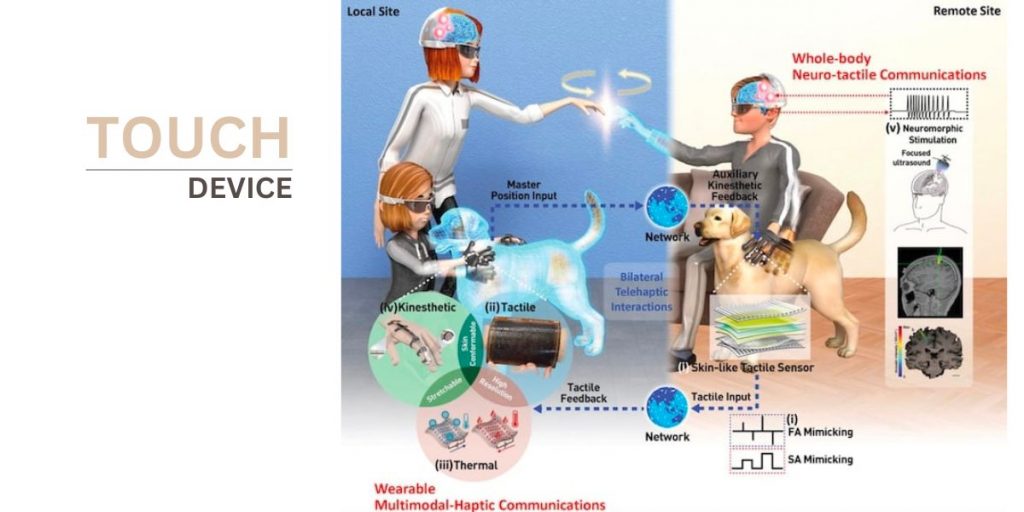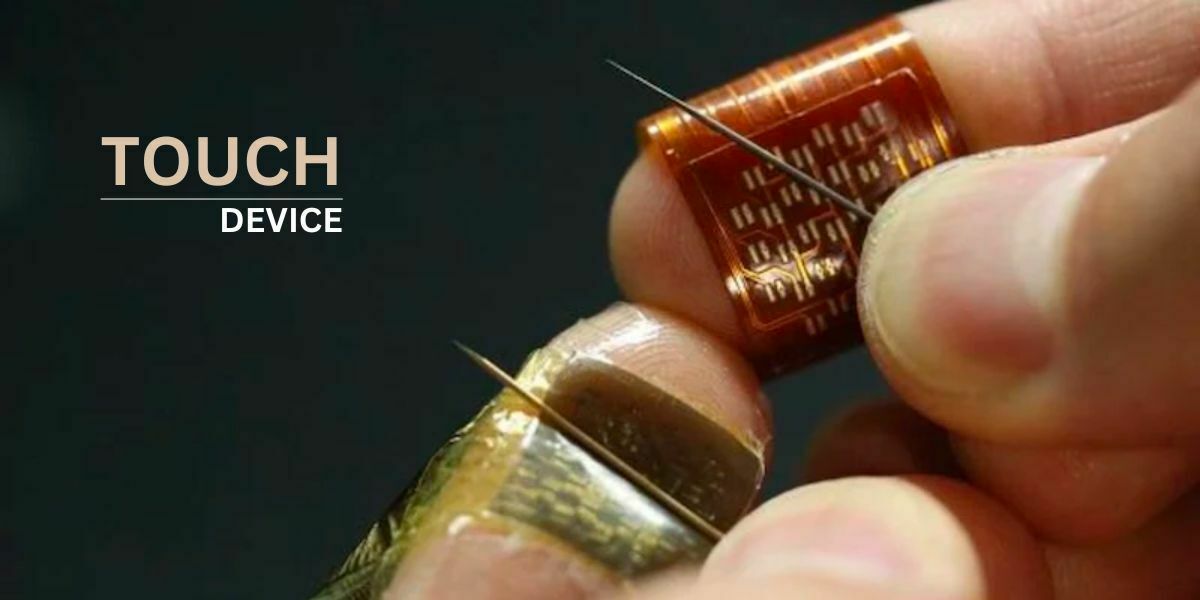Augmented and virtual reality (AR/VR) is touted as the next consumer electronics revolution. Central to AR/VR is haptics, an interface technique that requires designers to develop physical interactions with devices that are both natural and intuitive.
Heading Towards This New Thing: Telehaptic
Researchers from the Electronics and Telecommunications Research Institute (ETRI) in Seoul, South Korea, have published a paper reporting a major advancement in the field of “telehaptics.” The group created a gadget that attaches to fingertips to transmit touch remotely in real-time and deliver a rich tactile experience.
Through miniaturisation, it can provide immersion to virtual and real-life tactile experiences while providing the highest performance and usability in the world.

Kim’s team would produce a composite touch and texture that is the same as reality by integrating vibration and various sorts of tactile inputs by improving the performance and form factor of piezoelectric devices. “The light and flexible on-skin tactile reproduction device that can be mounted to the skin has advanced the foundation for immersive augmented reality content development,” Kim said in a statement.
Also Read: ChatGPT Has Arrived To Revolutionize the Internet
What exactly is Telehaptics?
Haptics refers to the technology that acquires information and manipulates items through touch. The majority of consumer gadgets incorporate haptics, typically in the form of a vibration motor for devices such as smartphones and watches.
Telehaptics, on the other hand, transmits across networks computer-generated tactile sensations. The purpose of telehaptics is to transmit and receive tactile information between two devices.
A telehaptic glove may capture a user’s tactile experiences, send that information to another user, and then replicate similar sensations on the recipient. The ultimate goal of this technology is to enable people to exchange tactile experiences and establish virtual interactions together.
Also Read: The Future Of Artificial Intelligence: Will We Be Ruled By Robots?
The Consequences of Telehaptics
Telehaptics relies on a variety of components, including specialised sensors to gather tactile data, a wireless connection to share data, and specialist tactile actuators to replicate tactile sensations.
A difficulty is that the quantity of essential components for a telehaptic system results in big devices. Consider the telehaptic glove from the preceding example. To create a natural-feeling system, the glove must be reasonably light, allowing for a pleasant user experience. The glove must also be flexible enough to conform to the hand as it moves.
The quantity of distinct components within a telehaptic system forces designers to choose between weight, adaptability, and functionality. Researchers are currently contemplating methods for pleasant and adaptable telehaptic devices that do not sacrifice performance.
Also Read: Blockchain Gaming-The Next Big Revolution In Gaming Industry
Researchers Develop a Method to Instantaneously Transmit Remote Touch
ETRI research describes a new ultra-flexible on-skin telehaptic technology worn on the user’s fingertip to transmit touch remotely and in real-time.
The system used by the researchers to record tactile information consists of a fast adaptive and slow adaptive mechanoreceptor-like pressure sensor array. This array, with a frequency range of 1 Hz to 1 kHz, records static and dynamic fingertip pressures as the fingertip experiences tactile sensations. The acquired tactile information is amplified and processed by a commercially available processing module worn on the back of the hand before being relayed to the receiver.
A description of the on-skin telehaptic solution developed by the researcher. Image used with permission of Nature
After receiving this data, the system recreates tactile information using a customised array of submillimeter-scale piezoceramic actuators. These actuators are purpose-built to generate vibration patterns with a 1.8 mm pitch and a high spatial resolution. Importantly, the array of actuators is integrated on a flexible substrate utilising a cross-pattern to retain flexibility and minimise stress during mechanical deformation.
With this prototype, the researchers demonstrated the viability of a flexible, performance-preserving telehaptic system. The researchers want to eventually design a more comprehensive system based on this prototype.










Leave a Reply